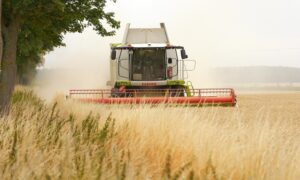As pet owners, we all want what’s best for our furry companions. We pamper them with toys, treats, and endless belly rubs. But what about their diets?
Providing proper nutrition is just as important for promoting our pets’ health and happiness. However, navigating the wide world of pet food can be overwhelming.
Should you feed kibble or canned food? Raw or cooked? Understanding the science behind your pet’s nutritional needs can help you make informed choices.
Visit OhMyWorld to learn more about pet diets and their nutritional needs.
Not All Pets Are Created Equal: Species-Specific Requirements
While nutrition principles are similar across species, each type of animal has unique dietary adaptations based on their ancestry and physiology. Cats are obligate carnivores, meaning they thrive on a meat-based diet. Unlike dogs, cats lack specific metabolic pathways, so they require much higher levels of protein and fat.
They also need more taurine, arginine, and preformed vitamin A. Dogs are omnivores with a more flexible ability to utilize plant material. However, they still require ample animal protein as the foundation for their diet.
Small mammals like rabbits and guinea pigs are herbivores, naturally grazing on grasses and leafy plants. They need diets focused on hay or fresh veggies high in vitamin C.
Specific ratios of calcium to phosphorus are crucial for these animals to avoid bladder stones.
Reptiles and birds of prey have completely different nutritional strategies, relying on whole prey items to meet their needs. Understanding these fundamental differences is key to providing species-appropriate meals.
Related: Can Guinea Pigs Eat Radishes?
Not All Ingredients Are Created Equal: Deciphering Pet Food Labels
With a dizzying array of options on store shelves, reading labels is an absolute must. Start by looking at the order of ingredients. The first few items should match up with your pet’s nutritional needs.
For cats and dogs, animal-based proteins like chicken, beef or fish should take top billing. Avoid vague terms like “meat byproducts” which can vary wildly in quality.
Also evaluate the food’s caloric density and nutritional adequacy. Higher protein and fat levels are great for active pets or those needing some extra weight.
For less active or overweight pets, look for moderate calorie foods with higher fiber. Verify the levels of key nutrients like calcium, vitamins, fatty acids and amino acids.
Special needs pets like growing puppies, pregnant animals, or seniors may require more tailored nutrition.
Don’t forget to consider your pet’s taste preferences and intolerances. Ingredient panels let you avoid common allergens like corn, wheat or chicken. Try different textures and flavors to find their favorites. With so many choices available, you can find foods to satisfy even the pickiest of palates.
Fresh, Raw, Homemade: Exploring Alternative Options
While conventional kibble or canned foods meet most pets’ basic needs, some owners pursue alternative diets.
Interest in raw and homemade options has grown based on their appeal as “natural” and less processed. However, these diets come with their own unique risks and benefits.
Raw diets aim to mimic a more ancestral, meat-focused diet. Supporters believe this improves digestion while reducing processed carcinogens.
Detractors argue raw meats may harbor harmful bacteria. Homemade diets allow for total control over ingredients.
However, formulating balanced recipes requires careful attention to detail. Most veterinary nutritionists recommend consulting with a vet first, and following published guidelines to avoid nutritional shortfalls.
There are merits to fresh alternatives, but execution is everything. Work closely with your vet and pet food companies offering these options to ensure safety and completeness.
For healthy pets on conventional diets, radical diet changes may not provide additional benefits. Focus instead on high quality commercial foods tailored to your pet’s needs.
Read More: Can Bearded Dragons Eat Raspberries?
An Evolving Science: Looking to the Future
Pet nutrition continues to advance, providing ever more insight into the bonds between food and health.
From leveraging nutrigenomics to formulate breed-specific foods, to analyzing microbiome impacts of novel ingredients, science is unveiling new ways to optimize diet.
As researchers elucidate more connections between nutrition and disease prevention, next-generation foods may continue shifting away from fillers and toward functional ingredients.
The takeaway for pet owners is to stay curious and open-minded. While current commercial foods are very complete, the ideal diet is always moving target.
Consult your vet on nutrition advances relevant to your pet’s needs. The marketplace offers more options than ever to explore, so you can feel confident matching your pet with a diet to help them continue living their very best life.

































